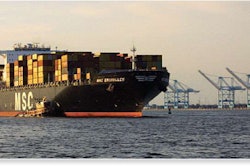Determining crash accountability is no easy answer
Q Will the Federal Motor Carrier Safety Administration revise its Crash Indicator BASIC in CSA to measure only preventable crashes in SMS methodology?
A Yes, FMCSA has announced that it will tackle determining crash predictability as part of its implementation of its Compliance Safety Accountability oversight system.

While the goal of identifying preventability is a noble one, one is led to question the ultimate cost or due process achieved under this methodology.
Under the safety rules that have been in place for more than 30 years since the implementation of FMCSA’s Safety Rating Methodology, 1.5 crashes per million miles has been a benchmark for receiving an unsatisfactory safety rating. However, upon audit, a carrier has been able to reduce its crash ratio by showing preventability. Since compliance reviews have been conducted on only about 17,000 carriers per year, this meant the numbers of balls and strikes the agency actually had to call with respect to crash preventability was not significant and was in the context of a compliance review.
SMS methodology and FMCSA’s professed intention to use raw data to rate carriers changes all this. To use crash data, the agency recognizes that it must call balls and strikes on all crashes to drill down to preventability. To do this, FMCSA apparently proposes to modify the DataQs system to allow motor carriers to challenge every crash. The appeals process would not go back to the state but would go to “contracted specialists.” Information I have seen suggests that FMCSA believes there are about 150,000 crashes per year that could be subject to the DataQs challenge process.
Someone at the American Trucking Associations apparently estimates 15 contractors can make decisions on all these accidents based upon police reports. Excuse my skepticism, but police reports alone hardly afford judicial process, and the idea of 15 employees deciding as many as 150,000 cases per year seems like an unreasonable task; if everybody files, that’s one review every 10 minutes. FMCSA apparently will propose that a carrier aggrieved by this specialist determination can appeal the case to the agency’s legal staff.

For an agency that is broke and is looking for an efficient measurement system, this proposal bears close monitoring.
Henry Seaton is a transportation lawyer who represents carriers.
Factors that determine if a crash will be used in a motor carrier’s Safety Measurement System data:
A fatality: any person(s) killed in or outside of any vehicle (truck, bus, car, etc.) involved in the crash or who dies within 30 days of the crash as a result of an injury sustained in the crash; or
An injury: any person(s) injured as a result of the crash who immediately receives medical treatment away from the crash scene; or
A towaway: any motor vehicle (truck, bus, car, etc.) disabled as a result of the crash and transported away from the scene by a tow truck or other vehicle.











